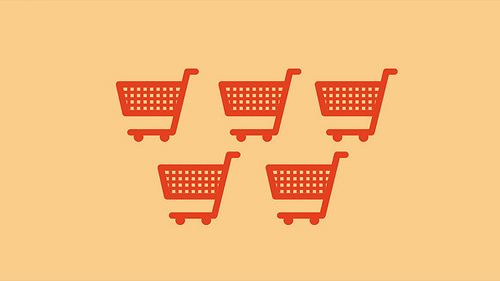Lead Scoring Techniques: Prioritizing Your Sales Funnel
Wednesday, August 20th, 2025

Building a sales funnel can feel like a maze, but with the right strategies, you can turn it into a smooth path toward success. Whether you’re managing a small business or running a growing enterprise, understanding how to prioritize leads is essential. That’s where lead scoring techniques come in. By knowing how to sort through potential customers effectively, you’ll save time, focus your energy, and maximize your marketing efforts.
Let’s explore how you can make your sales funnel work smarter, not harder, with easy-to-implement lead scoring techniques.
Understanding Lead Scoring Basics
Lead scoring is the art (and science) of ranking potential customers based on their likelihood to make a purchase. It’s like organizing your inbox—you prioritize the most important emails and handle the rest later. Similarly, in marketing, not every lead is ready to convert, and that’s okay. Lead scoring allows you to identify which leads are worth pursuing now and which ones need nurturing.
Start by asking these questions:
- Are they actively engaging with your content?
- Do they match your target audience profile?
- Are they interacting with your marketing campaigns?
By assigning points based on these behaviors and characteristics, you can focus on the leads that matter most.
Aligning Lead Scoring with Your Goals
Before diving into scoring, define your goals. Are you aiming to grow a specific product line? Or maybe you’re working to improve engagement on a new marketing campaign? Your lead scoring system should align with your broader business objectives. For instance, if you’re launching a skincare line, you might prioritize leads who have shown interest in self-care content or previously purchased similar items.
Goal alignment ensures your scoring process isn’t just organized but also purpose-driven.
Setting Up a Simple Scoring System
Creating a scoring system doesn’t have to be complicated. A straightforward approach is to assign points for actions like:
- Downloading a guide (+10 points)
- Attending a webinar (+15 points)
- Subscribing to your email list (+20 points)
On the flip side, you can deduct points for actions like unsubscribing or inactivity over a certain period. This balance keeps your list fresh and focused on leads that are truly engaged.
Pro tip: Use your customer relationship management (CRM) software to automate scoring—it’s a lifesaver for busy schedules.
Identifying High-Value Actions
Some actions speak louder than others. While downloading a freebie is great, a lead scheduling a consultation or adding items to their cart might carry more weight. Identify the high-value actions in your sales process and assign them appropriately high scores.
For example:
- Cart abandonment (+25 points)
- Requesting a quote (+30 points)
- Repeated visits to a pricing page (+50 points)
By recognizing these moments, you can move qualified leads through your funnel faster while offering them timely, personalized outreach.
Segmenting Leads by Behavior
Not all leads engage with your brand in the same way. Some might binge-read your blog posts, while others head straight to your product pages. Segmenting leads based on their behavior helps you fine-tune your approach.
Consider these behavior-based segments:
- Content Consumers: Leads engaging with blogs or newsletters.
- Product Explorers: Visitors browsing your product pages.
- Repeat Visitors: Frequent site visitors who haven’t converted yet.
Tailor your marketing to match their interests. For example, send content consumers additional helpful resources and offer exclusive discounts to product explorers.
Incorporating Demographic Data
Demographics play a big role in lead scoring. By understanding your audience’s location, age, or job role, you can refine your efforts further. For example, if your marketing campaign targets millennials, leads aged 25-34 might get higher scores than others.
Don’t overcomplicate it, though. Start with one or two demographics and expand as needed. Combine demographic insights with behavioral data for a more holistic picture of each lead.
Timing Is Everything: Scoring Based on Recency
Recency matters in lead scoring. Leads who interacted with your content yesterday are likely more engaged than those who visited six months ago. Consider adding a time-based element to your scoring system.
For example:
- Engagement within the past week (+10 points)
- Engagement within the past month (+5 points)
- No engagement in three months (-10 points)
This ensures your sales team focuses on leads who are actively interested, not just those who showed interest in the past.

Using Marketing Tools for Lead Scoring
Thanks to modern tools, you don’t have to score leads manually. Marketing platforms like HubSpot, Marketo, or Mailchimp offer built-in lead scoring systems to streamline the process. These tools track customer interactions, score them in real-time, and integrate seamlessly with your CRM.
Here’s how to get started:
- Set up scoring rules in your marketing tool.
- Sync your tool with your sales software.
- Use dashboards to monitor and refine your scoring process.
With the right tech, you’ll save time and boost efficiency.
Refining Your Scores with Feedback
Lead scoring isn’t a set-it-and-forget-it system. Regularly review and adjust your scores based on performance. If you notice that leads with certain scores aren’t converting, re-evaluate the actions or demographics tied to those points.
Gather feedback from your sales team, too. They often have direct insights into which leads are truly valuable. Combining data and team input ensures your scoring system stays relevant.
Nurturing Low-Scoring Leads
Not every lead is ready to buy today—and that’s okay. Instead of writing off low-scoring leads, focus on nurturing them. Use email campaigns, social media engagement, and content marketing to keep them in the loop.
Some nurturing ideas:
- Share inspirational stories or case studies.
- Provide behind-the-scenes glimpses of your business.
- Offer free resources tailored to their interests.
Over time, these leads may warm up and move closer to conversion.
Let 10KHits be your partner for buying web traffic that genuinely converts.
Prioritizing Leads for Immediate Action
Once your scoring system is in place, it’s time to take action. High-scoring leads should be your priority. Assign them to your sales team, reach out with personalized offers, or invite them to exclusive events.

For example, a lead who repeatedly visits your pricing page might benefit from a one-on-one consultation. Acting quickly on these signals can significantly increase your chances of closing the deal.
Celebrating Small Wins
Building and refining a lead scoring system takes time, but don’t forget to celebrate small wins along the way. Each improvement, no matter how minor, brings you closer to a more efficient sales funnel.
Use analytics to track your progress. Whether it’s a higher email open rate or increased conversions, these metrics highlight the value of your efforts.
Lead scoring is like fine-tuning your favorite playlist—it helps you focus on the hits and skip the noise. By prioritizing your sales funnel, you’ll not only save time but also create meaningful connections with your audience. It’s all about working smarter, not harder, and making your marketing count.
Filed under: Tips & Tricks
Tags: marketing
Exclusive Offer!
1,500,000 Points for $110 $68. If you're running low on points — don't miss out
limited time